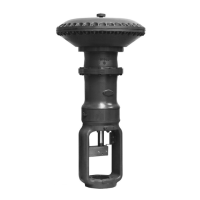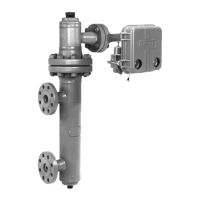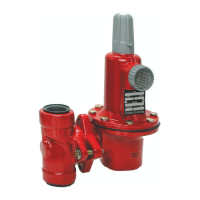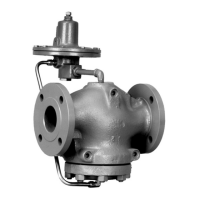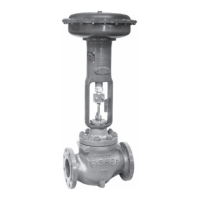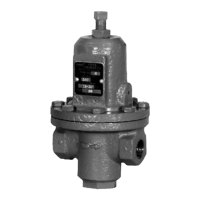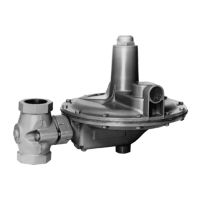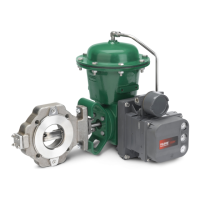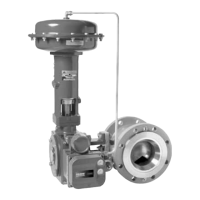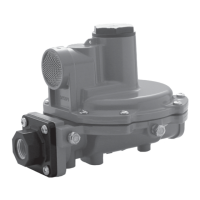Type 99
3
Figure 2. Schematic of Type 99 Regulator with Type 61L (Low Pressure) Pilot
A6814
OUTLET PIPE
PILOT
ORIFICE
BLEED
ORIFICE
BLEED VALVE
PILOT DIAPHRAGM
ASSEMBLY
PUSHER POST
ASSEMBLY
MAIN
DIAPHRAGM
MAIN VALVE
SPRING
PILOT CONTROL SPRING
PILOT DIAPHRAGM
INLET
INLET PRESSURE
OUTLET PRESSURE
ATMOSPHERIC PRESSURE
LOADING PRESSURE
Principle of Operation
The key to the operation of a Type 99 regulator is the
yoked double-diaphragm pilot. Fast response and
accuracy are made possible by the amplifying effect
of the pressure-balanced pilot and by the two-path
control system. The function of the pilot is to sense
change in the controlled pressure and amplify it into a
larger change in the loading pressure. Any changes
in outlet pressure act quickly on both the actuator
diaphragm and the loading pilot, thus providing the
precise pressure control that is a characteristic of a
two-path system.
A typical pilot has an approximate gain of 20, which
means the outlet pressure needs to droop only 1/20
as much as a direct-operated regulator in order to
obtain the same pressure differences across the main
diaphragm. Advantages of a pilot-operated regulator are
high accuracy and high capacity.
Upstream or inlet pressure is utilized as the operating
medium, which is reduced through pilot operation to
load the main diaphragm chamber. Tubing connects
the inlet pressure to the pilot through a lter assembly.
Downstream or outlet pressure registers underneath the
main diaphragm through the downstream control line.
In operation, assume the outlet pressure is less than
the setting of the pilot control spring. The top side
of the pilot diaphragm assembly will have a lower
pressure than the setting of the spring. Spring forces
the diaphragm head assembly upward, opening the
relay or inlet orice. Additional loading pressure is
supplied to the pilot body and to the top side of the
main diaphragm.
This creates a higher pressure on the top side of the
main diaphragm than on the bottom side, forcing the
diaphragm downward. This motion is transmitted
through a lever, which pulls the valve disk open,
allowing more gas to ow through the valve.
When the gas demand in the downstream system
has been satised, the outlet pressure increases.
The increased pressure is transmitted through the
downstream control line and acts on top of the pilot
diaphragm head assembly. This pressure exceeds
the pilot spring setting and forces the head assembly
down, closing the orice. The loading pressure acting
on the main diaphragm bleeds to the downstream
system through a small slot between the pilot bleed
valve and the bleed orice.
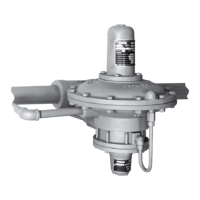
